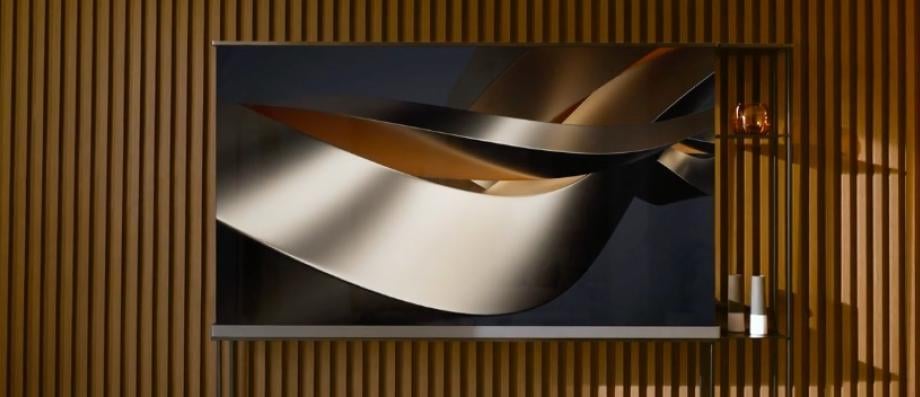The king object of living rooms worldwide, giant flat-screen televisions may soon end up in attics: South Korean electronics giants Samsung and LG are now banking on transparent objects – see

By Glenn Chapman
The king of living rooms worldwide, giant flat-screen televisions may soon end up in attics: South Korean electronics giants Samsung and LG are now banking on transparent, minimalist and connected objects. “What kind of screen that gives you space back?” asked an LG executive during a press presentation of the signature OLED T, which is expected to be released later this year.
“Welcome to a world that goes beyond full screens,” he said on Tuesday, the day before the official launch at the CES (Consumer Electronics Show) technology show in Las Vegas in the western United States. The new screen, presented with great fanfare, is “practically invisible when it’s off”, points out the company, and thus can blend perfectly with the decor of the room in which it is located.
Resembling a transparent rectangular box, this television offers viewing of TV programs in high definition, as soon as it is switched on. But by playing with transparency, it is also possible to display images of real surroundings – flames, swimming fish, etc. – to make it a decorative object in its own right.
Transparent TV technology is not entirely new, but companies have so far struggled to convince consumers due to high selling prices. For its part, Samsung introduced its own screen, which is also transparent like glass, but equipped with light-emitting diodes (LED) for high-definition images.
“Transparent light-emitting diodes are poised to redefine visual experiences, making the line between content and reality virtually impossible to discern,” Samsung said in a statement. Big screens have long been the stars of CES, the must-see annual event for the industry. Chinese electronics giant TCL, for its part, unveiled a series of more traditional models, including a “maxi size” television of 115 inches (292 centimeters diagonal).
Unsurprisingly, the theme of artificial intelligence (AI) dominated CES this year, with all major TV manufacturers in attendance highlighting it, with advances made possible by electronic chips embedded in screens. “In the hyper-connected age, it’s no longer just about providing quality visual experiences,” notes SW Yong, manager of Samsung Electronics, in a press release.
“Our lives should be enhanced both on and off the screen.” Industry veterans have touted the merits of AI for improving imagery, for example by instantly converting old classics into modern formats as if they had been restored, or by integrating viewer preferences into movie recommendations.
AI is also being used to enhance the capabilities of video games, with enthusiasts expecting greater immersion. Thus the latest range of Hisense televisions includes devices equipped with AI which, recognizing the content on the screen, adjusts in real time to improve the clarity of the image and the immersive effect.
According to SW Yong, the AI built into Samsung TVs is also designed to be a control point for all connected devices throughout the home. “We’re going to see television become the command center of the home beyond just broadcasting entertainment,” says Jessica Boothe, director of research at the Consumer Technology Association, which hosts CES.
For LG CEO William Cho, the world is at a “historic turning point” thanks to AI, a transformation he wants to join and provide insights using the data collected by the sensors of the billions of connected devices used around the world to detect patterns of behavior. , he explains.
“TVs still occupy a large part of the surface of the living room,” Avi Greengart, an analyst at specialist firm TechExponential, told AFP. “There is competition now,” he stresses. “Sure, it costs the same as your house, but it’s really cool.”





